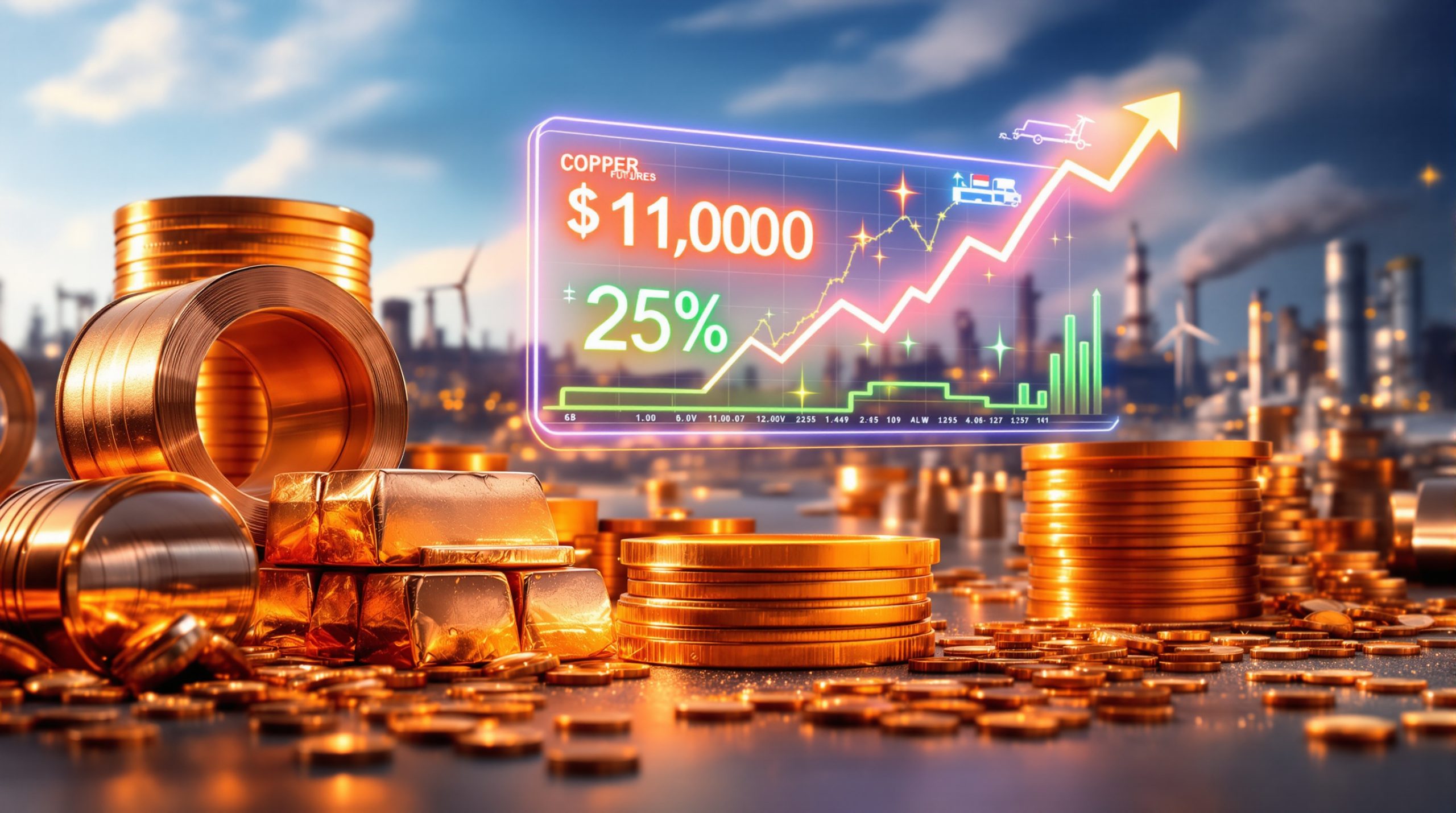Understanding the LBMA Silver Crisis: What's Really Happening?
The recent headlines about silver shortages at the LBMA have sparked intense debate within both investment circles and the wider commodities sector. Furthermore, understanding these events involves delving into how the London Bullion Market Association (LBMA) functions, monitoring stress signals in its inventory and pricing, and exploring the deeper roots of present-day scarcity. The silver market squeeze impact on global financial systems has become increasingly apparent as demand outpaces available supply.
The London Bullion Market Association's Role in Global Silver Trading
The LBMA stands as the world's main hub for over-the-counter trading in precious metals. London serves as the central clearing point for silver, with major bullion banks and market makers using its vaults as a settlement venue for global trades.
- Allocated Silver is fully segregated and physically set aside for specific owners, usually with documentation indicating bar serial numbers and provenance.
- Unallocated Silver, in contrast, is pooled and undifferentiated, representing a claim on metal rather than actual, separately stored bars. This system introduces greater counterparty risk, as not every paper claim is backed by specific, deliverable bullion.
London's vaulting network houses the vast majority of the world's silver ETF holdings and many institutional and industrial reserves. Consequently, its inventory levels serve as a crucial real-time barometer for global supply and demand.
Current Inventory Levels and Market Stress Indicators
In 2024, LBMA public data reflected an alarming drawdown—visible inventories fell as low as 155 million ounces, enough to cover only around six weeks of global physical demand. For context, levels above 300 million ounces were typical in past years.
Stress in the LBMA silver market is plainly visible in elevated borrowing costs (lease rates). Additionally, a tightly restricted free float (the true available metal for immediate withdrawal), and the persistence of backwardation (a market anomaly where spot prices significantly exceed futures) signal severe constraints.
Table: LBMA Silver Market Stress Indicators
| Metric | Historical Range | Current Level | Severity |
|---|---|---|---|
| Lease Rates | 0.1-1% | 5-30% (peaks at 100%) | Critical |
| Free Float Inventory | 300+ million oz | 155 million oz | Severe |
| Backwardation Spread | Minimal | $1-3/oz | High |
Periods where lease rates spiked above 30% and backwardation reached over $3 per ounce are unusual. Normally, silver lease rates are nearly negligible, and spot and future prices move more closely together. These signals strongly suggest genuine physical shortages affecting immediate market liquidity, according to London silver market analysis.
What's Driving the Global Silver Supply Shortage?
The roots of silver shortages at the LBMA aren't just speculative. However, multiple, reinforcing trends in the real economy and investor behaviour are converging to outstrip available supplies. Understanding these silver supply deficits requires examining both industrial and investment demand patterns.
Industrial Demand Fundamentals Creating Structural Deficits
Silver occupies a unique position in the metals world—some 50–60% of annual demand comes from industry. Current trends point to rising, inflexible demand from several critical sectors:
- Solar Energy: Nearly 33 million ounces of silver are consumed annually in photovoltaic (PV) solar panels, with panel installations rising globally.
- Electric Vehicles: Each EV requires two to five times the silver of a combustion vehicle, pushing estimated annual demand above 40 million ounces.
- 5G and Electronics: Miniaturised, high-performance circuitry for wireless and telecoms heavily favours silver due to its unparalleled conductivity.
- Medical/Antimicrobial Uses: Silver nanoparticles and coatings are seeing rapid expansion in healthcare applications worldwide.
Industrial users cannot easily substitute away from silver without compromising performance. Materials science research shows that alternatives like copper carry substantial efficiency losses, especially in photovoltaics and advanced electronics.
Investment Demand Pressures on Physical Markets
Alongside its industrial momentum, silver is increasingly in demand as a financial and monetary hedge. This demand is intensified by global inflation, currency depreciation, and portfolio diversification needs.
- ETF Inflows: Physical-backed funds like SLV and PSLV must source and hold bullion for every share created, directly removing metal from circulation.
- Retail "Stacking": Individual investors are buying coins and bars in record quantities, often at premiums, further tightening available inventory.
- Institutional Allocation: Hedge funds, family offices, and sovereign entities are increasing allocations to physical silver, amplifying competitive demand.
The silver market faces a paradoxical pressure where vast industrial users, requiring around 60% of yearly output, compete with record-setting investment demand for a resource that's remarkably difficult to substitute or quickly scale in supply.
How Do Silver Lease Rates Signal Market Distress?
Understanding Silver Leasing Mechanisms
Silver leasing is a short-term lending arrangement, where one market participant (often a bullion bank) borrows physical metal from another. This arrangement helps meet delivery or trading obligations, paying an interest-like lease rate for the privilege.
- Bullion banks need physical metal for client withdrawals, industrial offtake, or ETF creation. When immediate stockpiles run low, they must lease from holders, sometimes at dramatically elevated rates.
- Extreme lease rates (exceeding 10% and up to 100% annualised in rare crises) signal a dearth of readily accessible physical supply. Lease rates above 1% are rare and generally a sign of stress.
Historical Context of Silver Market Stress Events
The last time similar structural stress was witnessed was during the Hunt Brothers' silver squeeze of 1979-1980. Back then, aggressive buying spiked prices to inflation-adjusted record highs. Furthermore, bullion banks were forced to borrow metal at exorbitant rates, and futures markets saw acute backwardation.
Though today's shortages are driven by broader, more dispersed global demand, the scale of market intervention can echo past crises. For instance, regulatory margin hikes or ETF suspensions may resurface as authorities attempt to manage volatility.
Why Are ETFs Contributing to Silver Scarcity?
Physical-Backed ETF Mechanics and Market Impact
Physical silver ETFs function by acquiring real, deliverable bullion before issuing new shares. This mechanism means that spikes in investor enthusiasm (and subsequent ETF share creation) directly reduce available warehouse stocks.
- SLV (iShares Silver Trust): Held 500+ million ounces at its 2021 peak, mainly in London vaults.
- PSLV (Sprott Physical Silver Trust): Secures over 150 million ounces, vaulted primarily at the Royal Canadian Mint.
- Regional ETFs: Indian silver ETFs saw share creation suspended at times due to inability to source adequate bullion.
Table: Major Silver ETF Holdings and Sourcing Challenges
| ETF | Holdings (Million oz) | Storage Location | Recent Issues |
|---|---|---|---|
| SLV | 500+ | Multiple vaults | Sourcing delays |
| PSLV | 150+ | Royal Canadian Mint | Jurisdiction issues |
| Regional ETFs | 100+ | Various | Creation suspensions |
The Counterparty Risk Debate in Silver ETFs
ETF structures place multiple parties—custodians, sub-custodians, clearing systems—between investors and the underlying metal. In the event of severe market disruption, bankruptcy, or government intervention, ETF holders might find their position subject to complications.
- Direct possession (allocated physical metal) within jurisdictions upholding strong property rights offers the lowest counterparty risk.
- Indirect holdings (ETF shares) grant only a contractual entitlement—often with layers of title and obligations involving centralised clearinghouses and market makers.
Researchers and precious metal advocates often warn that during financial meltdowns, authorities might prioritise systemic stability. Consequently, they may place individual ETF share redemption rights at lower priority.
What Role Does Backwardation Play in Silver Shortages?
Backwardation Explained: When Spot Exceeds Futures
Backwardation in commodities occurs when spot (immediate delivery) prices exceed near-term futures. This signals intense short-term demand and/or insufficient supply. Historically, backwardation of over $1 per ounce in silver is a pronounced signal of market tightness.
- Behavioural traders may attempt to arbitrage this situation by sourcing spot metal to profit from higher prices.
- However, logistical constraints, delivery bottlenecks, and compliance requirements often render cross-market arbitrage unprofitable. In addition, these factors can make arbitrage prohibitively slow during severe shortages.
Geographic Arbitrage and Cross-Market Dynamics
Whilst price discrepancies between London, New York, and Asian exchanges can theoretically be exploited, real-world constraints include shipping delays. Furthermore, security considerations, customs processes, and exchange rule differences complicate these opportunities.
Shortages in one jurisdiction can ripple globally, with arbitrage failing to relieve stress if no excess metal exists elsewhere.
How Do Global Economic Factors Amplify Silver Demand?
Currency Debasement and Precious Metals as Monetary Hedges
As fiat currencies decline in purchasing power—demonstrated by gold's shift from $35/oz (1971) to over $2,000/oz (2024)—investors seek safety in non-counterparty stores of value. Consequently, the gold-silver ratio analysis becomes increasingly relevant for portfolio allocation decisions.
- Central banks worldwide have engaged in unprecedented monetary expansion. US government debt alone soared from $23.6 trillion at end-2019 to nearly $47.4 trillion by early 2024.
- Credit bubbles inflate asset prices before bursting, typically triggering flights to hard assets.
Geopolitical Tensions and Supply Chain Security
Trade wars, export controls, and regional conflicts prompt nations and corporations to stockpile strategic metals. For industries dependent on high-tech inputs, ensuring a stable flow of silver has become a risk-management priority.
- Nations may restrict exports or tighten reporting, further complicating global sourcing.
- Industry-wide supply chain diversification typically leads to higher precautionary inventories. This drives up demand during uncertain periods.
Today's silver shortages at the LBMA represent more than a mere supply-chain hiccup; they point to fundamental reconfigurations in global industrial demand and a reshuffled monetary landscape.
What Are the Investment Implications of LBMA Silver Shortages?
Physical Silver vs. Paper Silver Investments
The current market conditions highlight crucial differences between various investment approaches:
- Physical ownership offers protection from counterparty risk but entails storage, possible insurance, and jurisdictional considerations. During shortages, premiums for coins and bars rise, and liquidity may shrink.
- Paper exposure (ETFs, futures, unallocated accounts) is more liquid and convenient. However, it introduces multiple systemic and legal risks. Investors could find access frozen, shares suspended, or conversion to physical delayed in times of crisis.
Mining Sector Opportunities and Challenges
- Miners act as leveraged plays on the underlying metal and can generate exceptional profits during price surges. However, companies often manage resource extraction to smooth earnings, extracting lower grades during high-price periods.
- Operational factors—energy costs, ore grades, regulatory frameworks—can offset price advantages. This means elevated metal prices don't always translate directly into increased miner profits.
- Exploration timelines are long, with discovery to production ranging from 7-10 years. This limits the speed at which new supply can hit markets.
Could Silver Shortages Trigger Broader Market Effects?
Industrial Supply Chain Disruptions
Manufacturing delays may surface across multiple sectors if silver cannot be sourced at scale:
- Solar sector: Production bottlenecks could slow renewable energy deployment targets.
- Automotive industry: Electric vehicle manufacturers may face component shortages.
- Electronics manufacturing: Consumer technology production could experience delays.
Substitution options (moving to copper, aluminium, or other metals) are imperfect. Furthermore, rapid conversion of production lines is costly and time-consuming. Price pass-through: Higher silver prices are often transmitted straight to end-users, raising costs for green energy, consumer tech, and automotive products.
Financial Market Contagion Risks
- Precious metals leverage: Market stress can trigger forced unwinding, with financial institutions closing out positions and magnifying volatility.
- Cross-asset linkages mean silver shocks can ripple through mining equities, ETF products, and adjacent commodity markets.
- Policy responses: Central banks and regulators have, in the past, intervened to stabilise precious metals markets during acute crises.
Table: Potential Economic Impacts of Prolonged Silver Shortages
| Sector | Impact Level | Timeline | Mitigation Options |
|---|---|---|---|
| Solar Energy | High | Immediate | Limited substitutes |
| Electronics | Medium | 3-6 months | Some alternatives |
| Automotive | Medium | 6-12 months | Design modifications |
| Investment | High | Ongoing | Market adjustments |
What's the Outlook for Silver Supply and Demand Balance?
Production Capacity and Development Pipeline
Mining production remains relatively inelastic short-term. Most existing operations are running at or near capacity, and permitting constraints limit new developments. Project pipeline: From discovery to commercial output, the typical mine requires at least 7-10 years—a significant lag when demand is surging.
Recycling: Roughly 25-30% of annual silver demand is met by recycling electronics and industrial scrap. Whilst important, recycled supply cannot easily bridge extreme shortfalls. Economic analysis suggests this recycling rate may not increase significantly in the near term.
Demand Projections and Market Evolution
- Industrial demand from green energy, mobility, and electronics is expected to rise through 2030. However, much depends on future technological advances and global policy incentives.
- Investment demand may remain volatile, closely tracking macroeconomic and monetary trends. Should monetary conditions deteriorate or fear of currency debasement intensify, speculative demand could soar.
Regulatory and policy changes—from trade restrictions to environmental priorities—could either amplify or attenuate both supply and demand.
How Should Investors Navigate Silver Market Volatility?
Risk Management Strategies During Supply Shortages
Understanding effective silver squeeze strategies becomes crucial for portfolio management:
- Position sizing: Avoid overexposure—diversify across precious metals and other asset classes.
- Physical accumulation: Gradual, dollar-cost-averaging approaches can mitigate the risk of price spikes and illiquidity.
- Storage considerations: Select trustworthy, well-capitalised vaulting providers in stable jurisdictions; beware of "all-eggs-in-one-basket" risk with ETFs.
Monitoring Key Indicators for Market Changes
- LBMA Inventory Reports: Scrutinise monthly vault statistics for directional changes in free float supply.
- Lease Rate Trends: Track daily published figures for sudden spikes, which often precede retail shortages.
- Industrial Demand Data: Source from USGS, IEA, and industry bodies for signals of impending constraints or demand surges.
The current silver squeeze movement represents a significant shift in market dynamics. Investors must therefore adapt their strategies accordingly to navigate this evolving landscape successfully.
Further Exploration:
Readers interested in a deeper dive into precious metals markets and strategies for navigating volatile monetary regimes can explore educational materials and commodity market commentary available through independent financial publications and regulatory reports.
Disclaimer: This article is based on data publicly available as of April 2024. All projections, opinions, and analyses here are for informational and educational purposes only and do not constitute financial advice. Investors should conduct individual due diligence or consult with qualified professionals before making any investment decisions.
Looking to Capitalise on Silver Market Volatility?
Discovery Alert's proprietary Discovery IQ model delivers instant notifications on significant ASX mineral discoveries, empowering subscribers to identify actionable silver and precious metals opportunities ahead of the broader market. With the current LBMA silver crisis highlighting the importance of early-stage discovery investments, explore Discovery Alert's discoveries page to understand how historic mineral discoveries have generated substantial returns, then begin your 30-day free trial to position yourself ahead of market movements.




